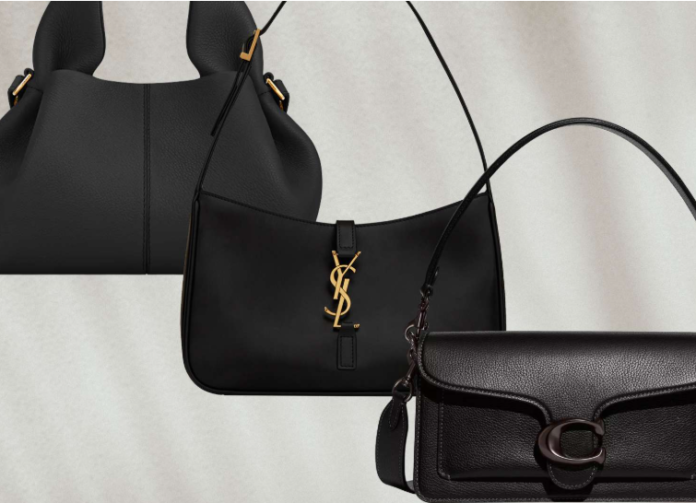The fashion industry is a vast and evolving world, where trends change, and consumer demand shifts constantly. Among the many popular styles and items, high imitation bags have gained significant traction in recent years. These bags are designed to replicate the look and feel of high-end luxury brands, offering consumers an alternative to the steep prices of authentic designer items. But what exactly goes into the craftsmanship of these bags, and how do manufacturers ensure they meet the expectations of their customers? In this article, we will break down the intricate processes, materials, and techniques that make 高仿包包 such an attractive choice for many fashion enthusiasts.
The Rise of High Imitation Bags
High imitation bags, also known as replica or designer-inspired bags, are not a new phenomenon. For years, they have been a staple in the fashion industry, giving those who cannot afford the original luxury pieces a chance to experience high-end aesthetics. The rise of online marketplaces and social media has further propelled their popularity, making them more accessible to a global audience.
See also: Everything about 26m square venturessilberlingtechcrunch
Why Do People Choose High Imitation Bags?
There are several reasons why consumers opt for high imitation bags over their original counterparts. The most obvious is the price factor. While an authentic luxury bag can cost thousands of dollars, a high imitation bag can provide a similar aesthetic at a fraction of the price. Additionally, for those who wish to experiment with a particular style or color, buying a high imitation bag is often seen as a more practical choice. For many, these bags provide a perfect balance of luxury-inspired design and affordability.
The Craftsmanship Behind High Imitation Bags
While some might perceive high imitation bags as inferior knockoffs, many are crafted with an extraordinary amount of attention to detail and skill. The level of craftsmanship involved in making these bags depends on the manufacturer and the quality they aim to deliver. Let’s take a closer look at the various elements involved in the creation of these accessories.
1. Material Selection: Choosing the Right Fabrics
One of the most crucial elements in crafting high imitation bags is selecting the right materials. The goal is to match the texture, color, and feel of the luxury designer bag as closely as possible. Manufacturers may use synthetic leather, vegan leather, or high-quality fabric to mimic the look of authentic leather or other luxurious materials. The stitching and durability of these materials also play a critical role in the overall quality of the bag.
- Synthetic Leather: Often used due to its cost-effectiveness and ability to replicate the texture of real leather.
- Vegan Leather: A cruelty-free option that provides a similar feel to leather but at a lower price point.
- High-Quality Fabric: Used for bags that mimic cloth-based luxury designs, such as canvas or woven materials.
2. Precision in Design: Replicating the Details
Designing a high imitation bag goes far beyond simply copying the overall shape. Crafting a bag that truly mimics a luxury designer piece requires precise attention to details such as the stitching, hardware, logo placement, and even the lining of the bag. Experts in this field often rely on advanced technology and highly skilled artisans to replicate the stitching techniques of luxury brands, ensuring the final product is as close to the original as possible.
- Stitching: The stitching is one of the most noticeable aspects of a bag’s quality. High imitation bags aim for an even, precise stitch pattern that matches the high standards of the luxury bag industry.
- Hardware: From zippers to clasps, every piece of hardware must be carefully chosen and manufactured to resemble the original as much as possible.
- Logos and Markings: For many high imitation bags, the logo plays a crucial role. Replicating the font, size, and positioning is vital to ensuring authenticity. This is often done with great care to avoid copyright infringement.
3. Crafting the Shape: Mold and Structure
Luxury bags are known for their impeccable structure, with a well-defined shape and a sturdy build. In high imitation bags, ensuring the bag holds its shape is just as important as creating the right design. The use of moldings, padding, and the right structure materials helps the bag maintain its intended silhouette.
- Molding: Some high imitation bags are molded to achieve the exact shape of their luxury counterparts, which involves using specialized techniques.
- Padding: Padding is strategically added to certain areas of the bag to ensure it stands up straight and retains its shape over time.
4. Color Matching and Finishing Touches
Another key aspect of the craftsmanship behind high imitation bags is getting the color just right. Whether it’s the soft hue of a designer leather or the vibrant shades of a canvas bag, manufacturers use dyeing and finishing techniques to match the exact color seen in the luxury originals. From the dyeing process to the finishing touches, the goal is to create a look that is indistinguishable from the high-end versions.
- Dyeing: Different types of dyes are used to replicate the colors and textures found in real designer bags.
- Finishing Techniques: Special treatments, like glossing or matting, are applied to ensure the bag feels and looks like the real deal.
5. Functionality and Durability: Quality Control
While aesthetics are crucial, high imitation bags must also be functional and durable to justify their price. Buyers expect their bags to hold up well over time, just like the original designer pieces. Manufacturers perform rigorous quality control tests to ensure that zippers work smoothly, seams are securely stitched, and straps are durable enough to withstand daily use.
- Zippers and Fastenings: High-quality zippers are used to ensure functionality. These are often tested for smoothness and durability.
- Interior Pockets: The inside of the bag must be just as well-designed, with functional compartments, pockets, and linings that resemble the original.
The Role of Technology in Imitation Bag Production
Advancements in technology have revolutionized the way high imitation bags are produced. With the help of digital design tools, manufacturers can now create highly accurate 3D models of bags before they are physically crafted. This precision allows for more accurate replication of the designs and speeds up the production process. Additionally, computer-aided design (CAD) programs enable designers to visualize every detail, ensuring a more flawless execution.
3D Printing and Prototyping
Some manufacturers have begun using 3D printing to create prototypes of the bags before beginning full-scale production. This allows them to test designs for functionality and aesthetics, ensuring that the final product is as close to the original as possible.
Ethical Considerations and Legal Implications
While high imitation bags are often seen as an affordable alternative to luxury goods, they raise ethical and legal concerns. Many luxury brands claim that the replication of their designs infringes on their intellectual property rights, and there are strict laws in place to protect the originality of designer goods. However, manufacturers of high imitation bags often work within the gray area of intellectual property, producing items that may closely resemble the original but with subtle differences to avoid copyright violations.
Ethical Concerns
There are ongoing debates about the ethics of purchasing and selling imitation bags. Some argue that buying these bags promotes a culture of counterfeiting, while others view it as a way to democratize luxury fashion for those who cannot afford authentic pieces. As the market continues to grow, it remains to be seen how ethical considerations will evolve in this area.
Conclusion
In conclusion, the craftsmanship of high imitation bags is a meticulous and sophisticated process that requires attention to detail, advanced technology, and skilled artisanship. From the careful selection of materials to the precise replication of luxury designs, manufacturers of these bags work hard to provide consumers with high-quality alternatives to expensive designer items. While the debate about the ethics and legality of these bags continues, there’s no doubt that they fill a gap in the market by offering style and sophistication at a more affordable price.
Frequently Asked Questions
1. Are high imitation bags made with the same materials as luxury bags?
No, high imitation bags are typically made with synthetic or vegan leather, while luxury bags are crafted from premium materials such as genuine leather.
2. How can I identify a high imitation bag from an authentic one?
Look for subtle differences in stitching, hardware quality, and logo placement. High imitation bags often lack the flawless finishing found in original designer pieces.
3. Are high imitation bags durable?
While they may not last as long as luxury bags, high imitation bags can be quite durable when crafted with high-quality materials and craftsmanship.
4. Why are high imitation bags so popular?
Their affordability and ability to replicate the look of expensive luxury bags make them popular, especially among those who desire a similar aesthetic without the high price tag.
5. Is it legal to sell high imitation bags?
The legality depends on the country’s intellectual property laws. While some imitation bags are created with subtle differences to avoid infringement, selling exact replicas of designer goods is illegal in many places.
6. How do manufacturers ensure quality control in high imitation bags?
Manufacturers perform rigorous testing of materials, stitching, hardware, and zippers to ensure the bags meet high standards for both appearance and functionality.

